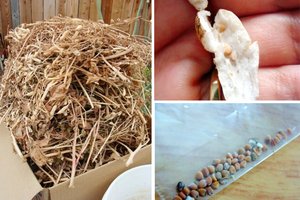Southern Maine life Fun Things to do NANCY TIMBERLAKE RE/MAX Shoreline The Common at 88 Middle Street Portland, Maine 04101; (207) 553-7314 ntimberlake@homesinmaine.com
Food, Entertainment, and Arts

Sunday, October 28, 2012
Monday, October 22, 2012
Tips for Energy Efficiency
8 Tips to Make Your Remodel More Energy Efficient and Your Home Healthier
- Published: October 18, 2012
As long as you’re remodeling, why not cut your utility bill and make your home a bit health
Saving energy
wasn’t on the list of reasons we’re finally ripping out the kitchen in our
mid-century home (green-veined, imitation marble laminate countertops
figured much more prominently). But, a session at the recent 2012 Remodeling
Show in Baltimore clued me in as to why adding a few simple tasks to our remodeling
plan could lower our home’s energy
bill, get rid of some of the annoying hot and cold spots in our house, and
make our home less hospitable to mold
and other allergens.
Carl
Seville, author of Green Building: Principles and Practices in
Residential Construction, shared some simple, inexpensive ways to make
remodels and additions more energy efficient from the standpoint of energy
usage and conservation of resources.
Try these eight tips from Seville:
1. Check for
water intrusion, condensation, and excess moisture before you begin the
project. Fixing those issues during remodeling can improve your home’s
indoor air quality
(excess moisture encourages mold).
2. Use the least
amount of framing allowed by your building code when adding walls. Not
only will you have to pay for less lumber and fewer nails, the contractor will
have more room to put insulation
in your walls, making your home more energy efficient.
3. Resist the
urge to splurge on multiple shower heads. Opt for a single low-flow
shower head rather than installing a car wash-style plethora of shower
heads.
4. If possible, add new HVAC ducts to parts of
your home that are heated and cooled, rather than placing them in a
space with unconditioned air (like the attic). If that’s not possible, insulate
the ducts. Have an HVAC diagnostician analyze your system to make sure it’s
sized correctly and balanced to properly exchange old and new air.
5. Be sure to insulate around recessed
lights that protrude into un-insulated
attic spaces — these are major sources of air
leaks.
6. If you’re wasting water,
you’re wasting energy. Look at high-efficiency or solar water
heaters, and insulate your water pipes. If you want hot water faster, move
the water heater closer to the faucet or install demand pumps to drive hot water
to the fixture.
7. Install wall-mounted efficiency toggle switch plates for
the outlets where you plug in your televisions and computers to make it easy to
cut off the power to electronics you’re not using.
8. A humidistat that automatically turns on
the bathroom
fan when moisture rises beats depending on teenagers or tenants
remembering to use the fan. Reducing bathroom moisture reduces the chances
you’ll have mold.
When I pull the kitchen
cabinets off the wall, I’m going to use caulk to seal between the wallboards
and the floorboards before I put down new flooring and install
the new cabinets. And since I’ll have the caulk out, I’m going to seal the top
of window trim, something my home’s builder didn’t do.
What are your tips for smart energy savings during a
remodel? Dona DeZube
Dona DeZube has been writing about real estate for more than two decades. She
lives in a suburban Baltimore Midcentury modest home on a 3-acre lot shared with
possums, raccoons, foxes, a herd of deer, and her blue-tick
hound.
Dona DeZube
Dona DeZube has been writing about real estate for more than two decades. She
lives in a suburban Baltimore Midcentury modest home on a 3-acre lot shared with
possums, raccoons, foxes, a herd of deer, and her blue-tick
hound.Read more: http://www.houselogic.com/blog/green-remodeling/how-to-make-your-remodel-more-energy-efficient/#ixzz2A4tqGD9s
Sunday, October 21, 2012
101 Things I Love about Portland Maine

Fascinating collection of animals with a large number of big cats!
http://dewanimalkingdom.com/
Friday, October 12, 2012
101 Things I Love about Portland Maine
264. Great flower shops: The Flower Kiosk in Portsmouth NH is small but interesting. They always have sweet items including old and new. Their flowers look fresh and varied.
http://flowerkiosk.com/
Tuesday, October 9, 2012
101 Things I Love about Portland Maine
263. Good old-fashioned diner chow at Marcy's in Portland. You can eat at booths or counter and a delicious breakfast served all day.
Thursday, October 4, 2012
How to Clean Up Your Garden for Fall & Winter
- Published: August 21, 2012
- By: Lisa Kaplan Gordon
Tidy your garden for fall and winter before the first frost to keep it comely even after the growing ends.
 Harvest seeds only from mature pods. After they dry, store them in a cool, dry place. Image: Kristi Stone, author of Let This Mind Be in You
Harvest seeds only from mature pods. After they dry, store them in a cool, dry place. Image: Kristi Stone, author of Let This Mind Be in You
Growing season is winding down, but your garden still needs your love. Spent vines, stubborn weeds, greens gone to seed are making your garden look sloppy and tired.
Here are some fall vegetable garden cleanup tips.
Bury the dead
Nothing looks sadder than leggy tomato vines, yellow zucchini leaves, and dried-up perennials that long ago displayed their last bloom. So pull and prune the dead or dying plants in your garden.
Bury spent plants in your compost pile; double-bag diseased and infested plants and place in the trash. (Empty mulch bags are great final resting places for these plants, so be sure to stockpile them in spring.)
If your tomato vines are still bearing fruit, keep staking and pruning them until the first hard frost, when they’ll likely die. And give the birds a break and leave some seed-bearing but spent blooms for them. They love sunflowers, cone flowers, berries, and black-eyed Susans.
Pull weeds
This is the last time this season to pull weeds. Pluck them before they flower and send seeds throughout your garden that will rest in winter and sprout in spring.
If you have a mulcher, chop the weeds and throw them on your compost pile. If you want to be extra sure that weed seeds are dead, bag weeds in black plastic and place in a sunny place for a couple of months. The heat will kill the seeds. Then throw the cooked weeds on your compost pile.
Harvest seeds
One way to cut garden expenses is to harvest and store seeds. One large sunflower, for instance, can provide seeds for hundreds of plants next spring. Here are some seed guidelines.
Stack and cover metal tomato cages. Bundle wooden or bamboo stakes, and store in a dry place so they don’t rot over winter. And retrieve panty-hose vine ties that you can re-use next spring.
Instead of throwing out broken cages and stakes, repurpose them. Snip off remaining cage legs to use for pepper supports. Broken tomato steaks will support smaller plants if you whittle one end into a point, so it easily slips into the ground.
Bury the dead
Nothing looks sadder than leggy tomato vines, yellow zucchini leaves, and dried-up perennials that long ago displayed their last bloom. So pull and prune the dead or dying plants in your garden.
Bury spent plants in your compost pile; double-bag diseased and infested plants and place in the trash. (Empty mulch bags are great final resting places for these plants, so be sure to stockpile them in spring.)
If your tomato vines are still bearing fruit, keep staking and pruning them until the first hard frost, when they’ll likely die. And give the birds a break and leave some seed-bearing but spent blooms for them. They love sunflowers, cone flowers, berries, and black-eyed Susans.
Pull weeds
This is the last time this season to pull weeds. Pluck them before they flower and send seeds throughout your garden that will rest in winter and sprout in spring.
If you have a mulcher, chop the weeds and throw them on your compost pile. If you want to be extra sure that weed seeds are dead, bag weeds in black plastic and place in a sunny place for a couple of months. The heat will kill the seeds. Then throw the cooked weeds on your compost pile.
Harvest seeds
One way to cut garden expenses is to harvest and store seeds. One large sunflower, for instance, can provide seeds for hundreds of plants next spring. Here are some seed guidelines.
- Harvest seeds from heirloom vegetables and standard plants.
- Disease can spread through seeds, so only harvest seeds from your healthiest plants.
- Don’t harvest seeds from hybrid plants, which often are sterile or will look nothing like the parent plant.
- Only harvest mature seeds from dry and faded blooms and pods. Mature seeds are often cream colored or brown.
- After seeds are dry, store them in envelopes or glass jars in a cool, dry place.
Stack and cover metal tomato cages. Bundle wooden or bamboo stakes, and store in a dry place so they don’t rot over winter. And retrieve panty-hose vine ties that you can re-use next spring.
Instead of throwing out broken cages and stakes, repurpose them. Snip off remaining cage legs to use for pepper supports. Broken tomato steaks will support smaller plants if you whittle one end into a point, so it easily slips into the ground.
 Lisa Kaplan GordonLisa Kaplan Gordon is a HouseLogic contributor and builder of luxury homes in McLean, Va. She’s been a Homes editor for Gannett News Service and has reviewed home improvement products for AOL.
Lisa Kaplan GordonLisa Kaplan Gordon is a HouseLogic contributor and builder of luxury homes in McLean, Va. She’s been a Homes editor for Gannett News Service and has reviewed home improvement products for AOL.Read more: http://www.houselogic.com/home-advice/gardens/fall-garden-cleanup/#ixzz28MUgd62e
Tuesday, October 2, 2012
101 Things I Love about Portland Maine
262. Black Point Inn: Great lunch on the porch while enjoying the views!
http://www.blackpointinn.com/inn/
Subscribe to:
Posts (Atom)














